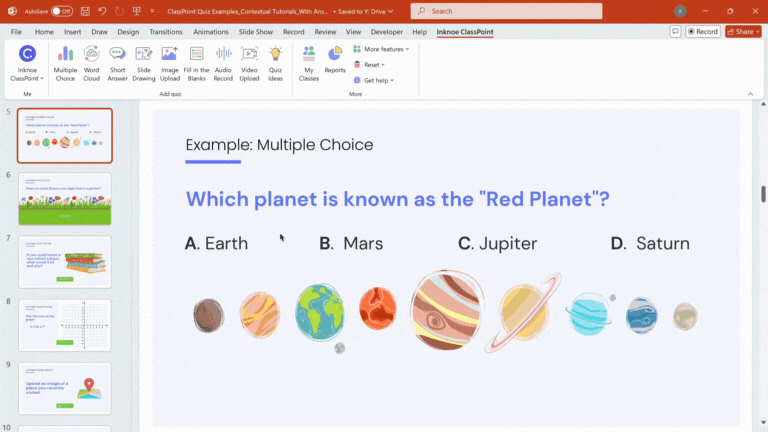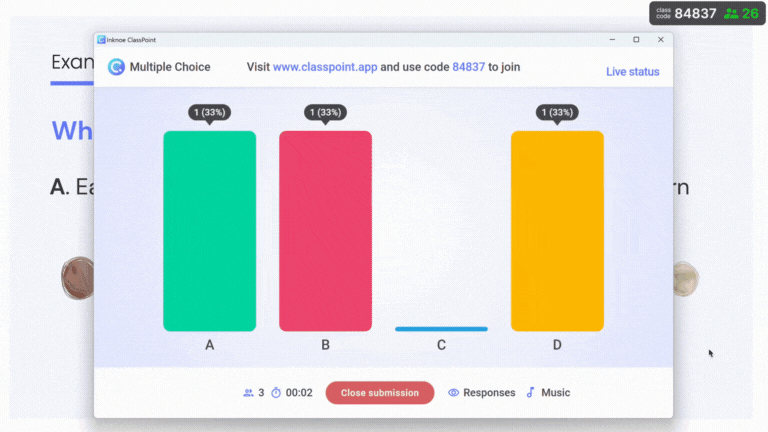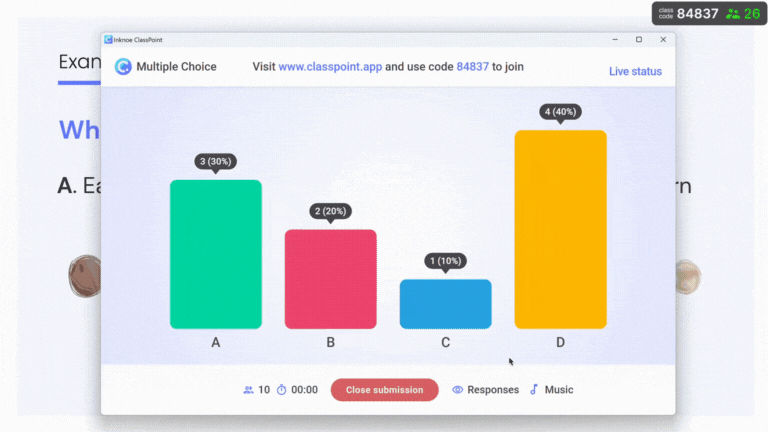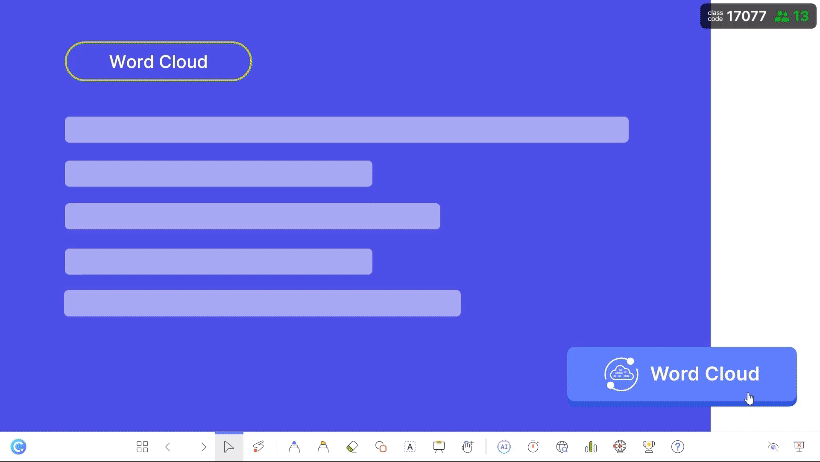ClassPoint is loaded with features to enhance your lessons, but the ClassPoint Quiz questions types are definitely something you’ll want to explore early on. Have you ever noticed that the interactive buttons change colors at different stages? You might be asking, “What do these colors mean, and how can they help me manage my quizzes more effectively?” Today, we’ll break down what each color represents to help you seamlessly navigate through your interactive sessions.
🔵 Blue Button – New Question Added
When you first add an interactive question to your ClassPoint quiz question slide, the button appears in blue. This signifies that a new question has been added, but it hasn’t received any responses yet.

🟡 Yellow Button – Collecting Responses
Once you run your ClassPoint quiz and minimize the responses window, the button turns yellow. This color indicates that the quiz is actively collecting responses. You’ll also see the number of participants and how long the quiz has been running.

🟢 Green Button – Responses Collected and Saved
After you close submissions for your ongoing ClassPoint quiz, the button will turn green. This signals that all responses have been collected and saved, allowing you to review them later—even in edit mode after your presentation.

Here's our handy manual on Creating a Lesson with ClassPoint from Start to Finish to help you get started.
ClassPoint Quiz Types
Have you tried all 8 of ClassPoint’s interactive question types? Each type serves a different purpose to boost student engagement. Let’s check out the table below to see how they can be used effectively.

| Question Type | What it does | Best for |
| Multiple Choice | Allows participants to select one or more options from a set of choices. Useful for quizzes, polls, and assessments. | Conduct a quick knowledge check during a lecture to gauge student understanding of a topic. |
| Word Cloud | Participants submit words or phrases, which are then displayed as a word cloud, showing the most common responses in larger fonts. | Gather instant feedback from students on a specific topic or lesson using a single keyword or phrase. |
| Short Answer | Participants provide brief, open-ended responses. Useful for more detailed feedback or answers to specific questions. | Collect students’ opinions or reflections on a concept discussed in class. |
| Slide Drawing | Allows participants to draw directly on slides, engaging them interactively with visual input. | Ask students to annotate a diagram, such as labeling parts of a cell in a biology class. |
| Image Upload | Enables participants to upload images as responses. This is useful for visual learning or showcasing creative work. | Ask students to upload photos of their project work, such as a science experiment result or art project. |
| Fill in the Blanks | Students fill in missing words or phrases in a sentence or paragraph. Great for testing specific knowledge and recall. | Test students’ comprehension by asking them to complete a statement based on a recent lesson, such as filling in key terms in a math equation. |
| Audio Record | Participants can record and submit their voice. Useful for language learning or verbal explanations. | In a language class, ask students to record themselves pronouncing words or sentences in a foreign language. |
| Video Upload | Allows participants to submit video recordings. Useful for presentations, demonstrations, or project submissions. | Students submit video presentations explaining their understanding of a topic, such as a history project or science demonstration. |
Wrapping Up
In this article, we explored how ClassPoint’s interactive buttons change colors throughout your quizzes and activities. Here’s a quick summary of what each color represents:
- Blue Button – A new question with no responses yet.
- Yellow Button – Responses are being collected.
- Green Button – Responses have been collected and saved.
Remember to save your PowerPoint after class to keep the buttons green and retain all student responses. You can also access detailed reports anytime, anywhere through the ClassPoint web app.
Check out our question lists for ideas on your next ClassPoint quiz

